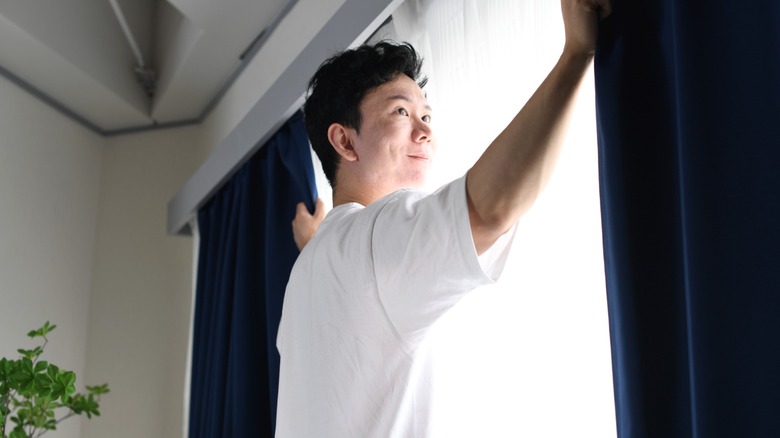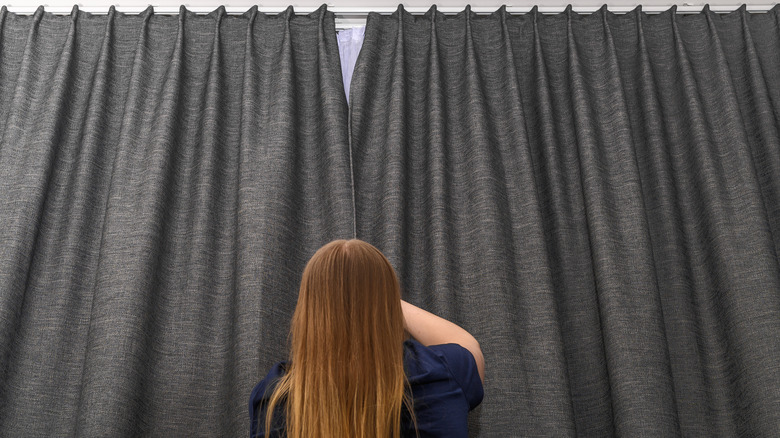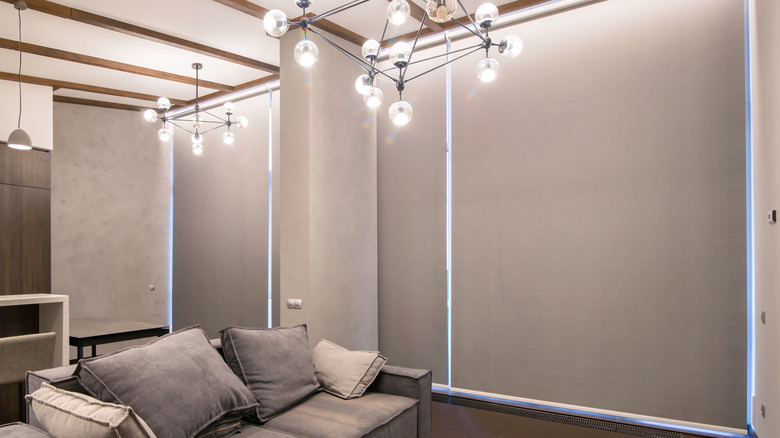Blackout Curtains Vs. Blackout Shades: Which Are Best For You?
Whether you live in the city or just need some uninterrupted Z's, blackout shades and curtains can help keep out light and transform your space into a peaceful sanctuary. However, since both options block light, how do you know which one is best for your home? That depends on several variables: personal taste, space, and lifestyle.
Curtains tend to be more insulating, while shades provide more control over the amount of light in a room. Blackout curtains are typically constructed from thick, tightly woven fabrics, often with multiple layers or a special lining that prevents light from passing through. They're designed to hang past the edges of a window to block out any gaps where light might sneak in. Blackout shades are made from tightly-woven fabric that helps minimize light leakage. You also have to remember that what works best for one room may not work well for other areas of your home. Understanding the pros and cons of each item can help you make an informed decision about whether blackout shades, curtains, or a combination of both is necessary.
Pros and cons of blackout curtains
The thick, multi-layered fabric that comprises blackout curtains provides insulation, sound absorption, and blocks artificial and natural light. The material provides sound-dampening properties, making it a great option for nurseries, home offices, and other areas where noise reduction is desired. The insulation can help maintain internal room temperatures, although it is not a primary function. If temperature control is a primary concern, thermal curtains might be a better option. Another plus is that you have control over the style and color of the curtains, so you don't have to sacrifice design for comfort.
A downside to blackout curtains is that they may not provide the same level of coverage that shades do. They're super heavy, with many curtains weighing up to 3 pounds per square yard. This makes them difficult to maneuver, and unlike shades, you have limited control over how much light enters the room. They require more space than shades, and they may have specific care instructions, like dry cleaning. Since these curtains need special care, they may not be suitable for particularly high-traffic areas or rooms with small children and pets where they're more prone to dirt or damage.
Pros and cons of blackout blinds
Blackout shades — or blackout blinds — come in different styles, including roller, Roman, and cellular. Blackout roller blinds are typically made of fabric that sits inside a rolling mechanism. Cellular blinds feature a "honeycomb" design that also offers insulation. Roman blinds are made of fabric that folds into neat pleats that drape over when raised. Blackout shades are designed to block out light, either through the layering of fabric or the use of material with light-shielding characteristics.
One of the biggest advantages of shades is light control, because you can choose how much light to allow in. They're also not as obtrusive as curtains, so they're perfect for small rooms or areas with a ton of foot traffic. Blackout blinds can also be more budget-friendly.
The downsides to blackout blinds include little to no insulation compared to curtains. Certain blinds may be difficult to clean, either due to the way they fit on the window, the shape, or the material. For instance, fabric blinds can get just as dirty as curtains. A quick dusting can help with light dirt and dust, but stains may require a bit more time or money to clean. Blackout shades may not be the most stylish option either, but there are ways to DIY custom blackout shades with wallpaper or even paint to make them your own. If you're not fond of the price tag of either option, blackout window film is another top alternative to blackout curtains and blinds.


